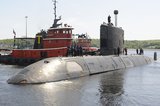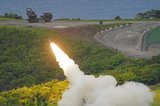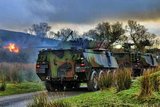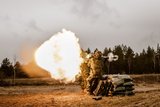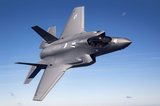Taiwan asks US for new fighter jets to defend against China
Taiwan has made a formal request to the United States for new fighter jets to defend itself against increasing Chinese threats, Deputy Defence Minister Shen Yi-ming told reporters on 7 March 2019.
‘We made the request to purchase (fighter jets) because China has been increasing its military strength and we are starting to have an imbalance of power in our air defence capabilities,’ Shen added. The request, if granted, could ramp up tensions between China and the United States.
Beijing sees Taiwan as part of its territory awaiting unification, even though the two sides have been ruled separately since the end of a civil war in 1949. China has significantly stepped up diplomatic and military pressure on Taiwan since the Beijing-sceptic President Tsai Ing-wen took office in 2016, including staging a series of military exercises near the island. Chinese bombers and surveillance aircraft have also begun flying much more regular sorties around the island.
Washington switched diplomatic recognition from Taipei to Beijing in 1979, but has remained Taiwan's most powerful unofficial ally and biggest arms supplier. Last year, the US irked China over its plans to sell a batch of military parts to Taiwan in a $330 million contract including standard spare parts for aircraft. Beijing has been incensed by warming ties between Washington and Taipei, including the approval by the US State Department of a preliminary licence to sell submarine technology to the island.
But fearing a possible backlash from Beijing, the US has repeatedly denied Taiwan's requests since 2002 for new fighter jets including newer F-16s and F-35s. In that time China has massively ramped up spending on its armed forces, including highly advanced fifth-generation jet fighters. That has left Taiwan with an ageing air force that analysts say is in desperate need of an upgrade. The island currently has 326 fighter jets, all in service since the 1990s, including US-made F-16s, French Mirage 2000s and Taiwan's own indigenous fighters (IDF).
Defence officials would not confirm how many fighter jets they have asked for in the purchase request, or what model. Local media Apple Daily reported Taiwan was seeking 66 F-16V at a cost of $13 billion including missiles, logistics and training.
‘It does not matter if it is F-15, F-18, F-16 or F-35, as long as it fits our combat needs,’ Tang Hung-an, a major-general with Taiwan's Air Force Command Headquarters said. Tang added that the letter of request to the US did not specify which type of aircraft Taiwan wants.
More from Defence Notes
-
![How might European countries look to tackle drone incursions?]()
How might European countries look to tackle drone incursions?
Disruption of infrastructure in Europe, whether by cyberattack, physical damage to pipelines or uncrewed aerial vehicles flying over major airports, as has happened more recently, is on the rise. What is the most effective way of countering the aerial aspect of this not-so-open warfare?
-
![Taiwan approved for $11 billion weapon purchase from US]()
Taiwan approved for $11 billion weapon purchase from US
The US State Department’s approval of a multi-billion-dollar sale of weapons to Taiwan includes tactical mission networks equipment, uncrewed aerial systems, artillery rocket systems and self-propelled howitzers as well as anti-tank guided missiles.
-
![Ireland spells out $2.3 billion shopping list in five-year defence spending plan]()
Ireland spells out $2.3 billion shopping list in five-year defence spending plan
Ireland’s multi-annual investment in capital defence spending is set to rise from €300m in 2026 to €360m in 2029–2030 with major upgrades across land, air, maritime and cyber domains.
-
![Canada to deepen integration of multi-domain capabilities to strengthen its defences]()
Canada to deepen integration of multi-domain capabilities to strengthen its defences
The Canadian Department of National Defence has created new organisations to manage the procurement and integration of all-domain solutions and allocated US$258.33 million to strengthen production capacities.
-
![US National Security Strategy prioritises advanced military capabilities and national industry]()
US National Security Strategy prioritises advanced military capabilities and national industry
The 2025 NSS has emphasised investment in the US nuclear and air defence inventory and national industry, but it leaves multiple unanswered questions on how the White House will implement this approach.
-
![Canada set to look away from its neighbour and across the Atlantic for partners]()
Canada set to look away from its neighbour and across the Atlantic for partners
While non-EU UK struggles to join the Security Action for Europe initiative, which provides loans for defence programmes, Canada has become the first country outside Europe to get access – and did so for a nominal fee.









